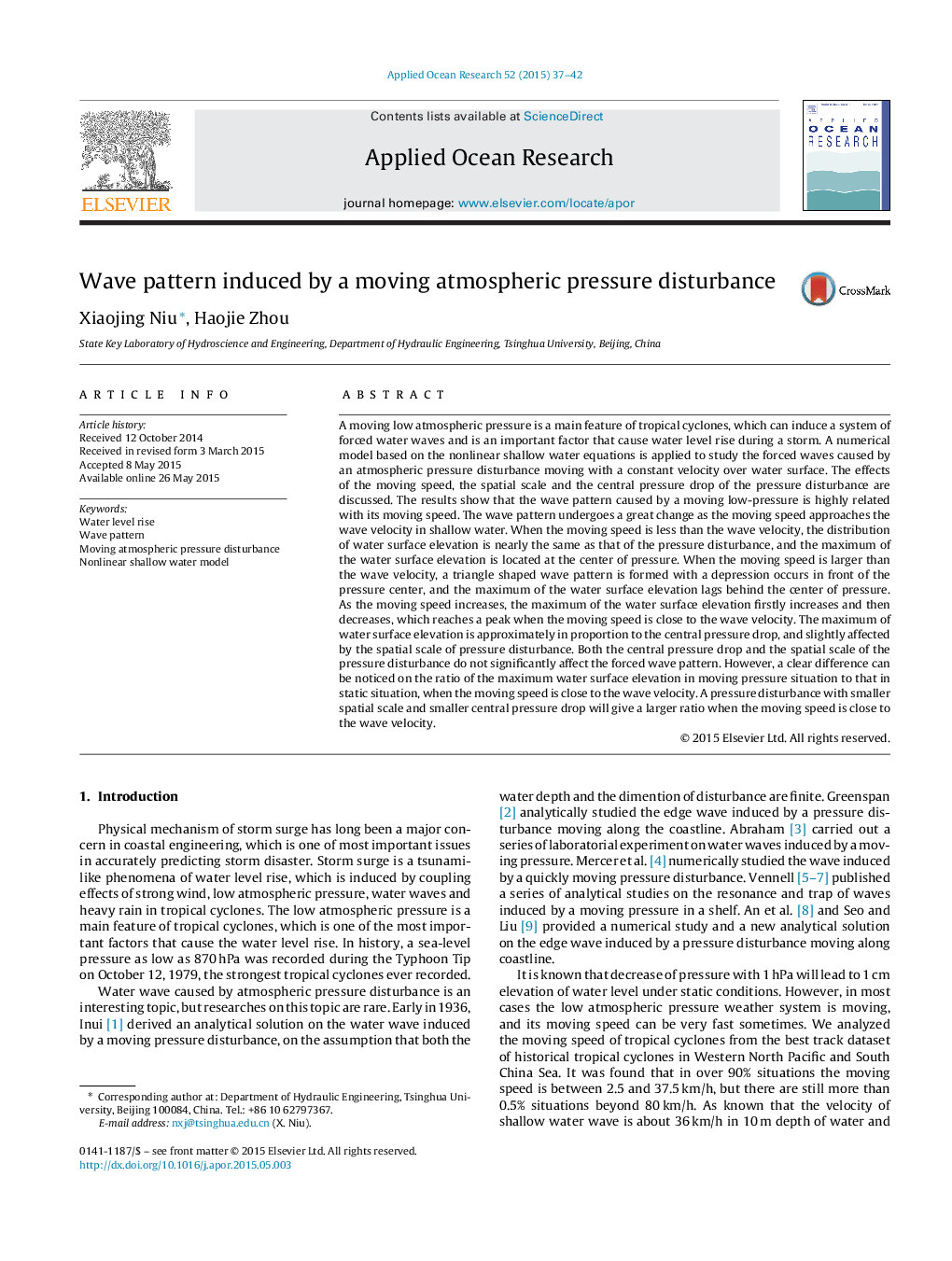| Article ID | Journal | Published Year | Pages | File Type |
|---|---|---|---|---|
| 1719929 | Applied Ocean Research | 2015 | 6 Pages |
•Wave pattern induced by moving pressure disturbance is numerically studied.•The variation of the induced water level rise with the pressure speed shows resonance feature.•Effects of the central pressure drop and pressure spatial scale are significant.
A moving low atmospheric pressure is a main feature of tropical cyclones, which can induce a system of forced water waves and is an important factor that cause water level rise during a storm. A numerical model based on the nonlinear shallow water equations is applied to study the forced waves caused by an atmospheric pressure disturbance moving with a constant velocity over water surface. The effects of the moving speed, the spatial scale and the central pressure drop of the pressure disturbance are discussed. The results show that the wave pattern caused by a moving low-pressure is highly related with its moving speed. The wave pattern undergoes a great change as the moving speed approaches the wave velocity in shallow water. When the moving speed is less than the wave velocity, the distribution of water surface elevation is nearly the same as that of the pressure disturbance, and the maximum of the water surface elevation is located at the center of pressure. When the moving speed is larger than the wave velocity, a triangle shaped wave pattern is formed with a depression occurs in front of the pressure center, and the maximum of the water surface elevation lags behind the center of pressure. As the moving speed increases, the maximum of the water surface elevation firstly increases and then decreases, which reaches a peak when the moving speed is close to the wave velocity. The maximum of water surface elevation is approximately in proportion to the central pressure drop, and slightly affected by the spatial scale of pressure disturbance. Both the central pressure drop and the spatial scale of the pressure disturbance do not significantly affect the forced wave pattern. However, a clear difference can be noticed on the ratio of the maximum water surface elevation in moving pressure situation to that in static situation, when the moving speed is close to the wave velocity. A pressure disturbance with smaller spatial scale and smaller central pressure drop will give a larger ratio when the moving speed is close to the wave velocity.
